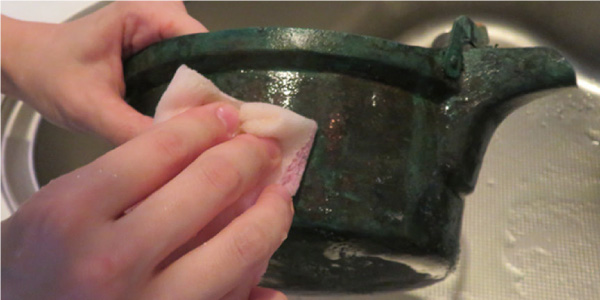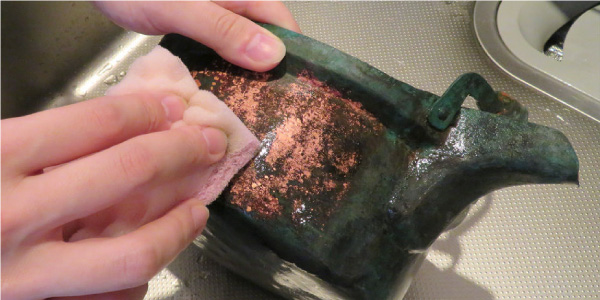About copper products

Contents
I want to know about copper!
They are made from a material with excellent antibacterial properties and heat conductivity, but which easily changes color.
Copper has excellent antibacterial properties and is also good at conducting heat. Heat is distributed evenly through the pan, so copper was widely used in France and throughout Europe in the past. Moreover, its characteristic, beautiful tones mean that it is also used in distinctive interior items.
However, the drawback of copper is that it soon changes color. As you can tell from \10 copper coins, it turns black. Because of this, the Food Sanitation Act stipulates that the parts of copper utensils which come into contact with food must be completely tin- or silver-plated. If you look at the interior of copper pans or kettles which are on sale, you should easily be able to see that the surface is light gray.
How effective are copper’s antibacterial properties?
E. coli bacteria, staphylococcal bacteria, streptococcal bacteria and so on are sterilized within seven hours.
In 1893, it was discovered that simply mixing a tiny amount of copper into water gave it astonishing antibacterial properties. This was called “oligodynamic metal action”, and it has been discovered that silver and mercury show similar effects.
In an experiment where metal juices to which E. coli bacteria, staphylococcal bacteria, streptococcal bacteria and so on had been added were made to stick to thin plates of stainless steel, aluminum, copper, and brass, no bacterial growth could be observed on the copper or brass. However, on the stainless steel and aluminum plates, all the types of bacteria grew and reproduced in a striking way. In terms of speed, the results showed that the copper and brass were sterilized within 7 hours, while on the stainless steel and aluminum, all the types of bacteria had grown and reproduced significantly after 8 days. The fact that copper has long been used in water supply and drainage pipes also shows that it is a metal with excellent hygienic properties.
A kind of green rust has appeared on the copper!
This green rust is called verdigris, and is harmless.
Verdigris is a compound with basic copper carbonate as its main component. It was formerly said to be highly poisonous because of its unpleasant green color. However, in August 1984, the Ministry of Health and Welfare announced its position that verdigris was harmless, demonstrating that it does not dissolve in water nor accumulate in the body.
even if you continued to use copper items on which verdigris had appeared after washing them, there would be no problem at all in terms of hygiene. Please use them without worry.
I would like to know how to get rid of verdigris!
Use vinegar and salt, or cream cleanser.
Please soak a cloth or sponge in vinegar with which an equal amount of salt has been mixed, and rub the verdigris to remove it. Wash it afterwards with dishwashing detergent. You can also rub it with cream cleanser on a soft sponge.


How should I care for copper items?
- Remove the dirt with a neutral kitchen detergent and a sponge.
- Finish by washing them in warm water and drying off the moisture thoroughly with a cloth.
- Metal scourers and coarse-grained cleansers damage the copper and cause verdigris, so these should be avoided.
- Polish the outer surfaces from time to time with a cleansing agent specifically for copper or a fine-grained cleansing cream, polishing always in the same direction.
- Store the items in a place with low humidity. If they will not be used for a long period, wrap them in newspaper and put them inside a plastic bag for storage.
Copper is vulnerable to acid and chlorine, so if you leave food in the pans for a long time, the taste or color may alter. Please transfer the food to another container soon after cooking.
What should I do if copper items have changed color?
Put some abrasive polish for copper onto a soft cloth and remove the color.
The more you care for your copper items, the more they will take on a beautiful subdued tone. However, if they have been tin-plated, please do not use metal utensils which damage the surface, in the same way as with items treated with fluorine resin. Of course, copper is susceptible to heat, so please avoid heating an empty pan.






